One of the most important dates in the Eastern Orthodox calendar is 15th August – the Assumption of the Virgin Mary. It’s a national holiday which sees events taking place all over the country to celebrate Mary ascending into heaven. Of course, Kefalonia celebrates too, so Anna and I decided to visit some of the most important churches involved in the day’s events.
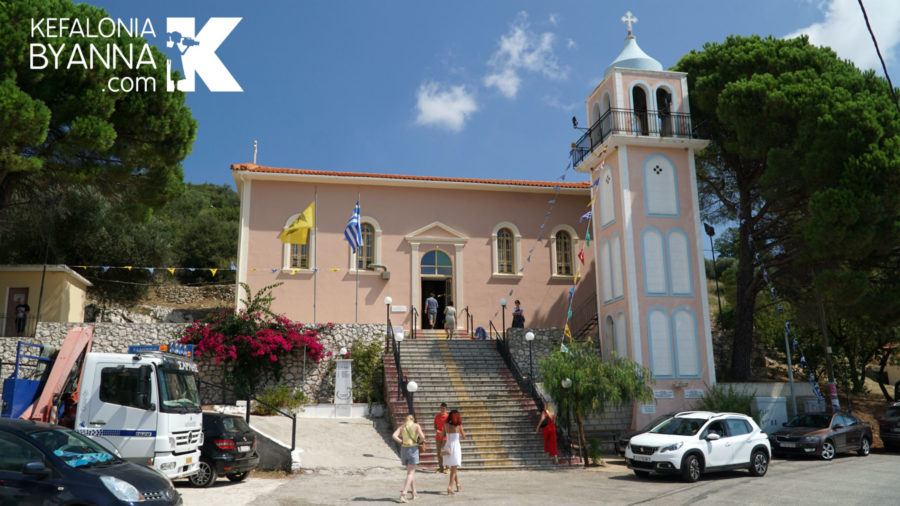
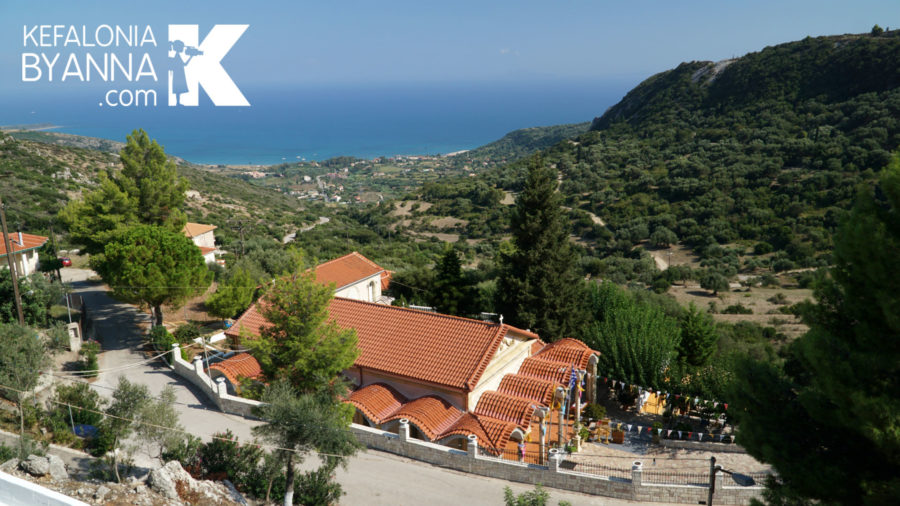
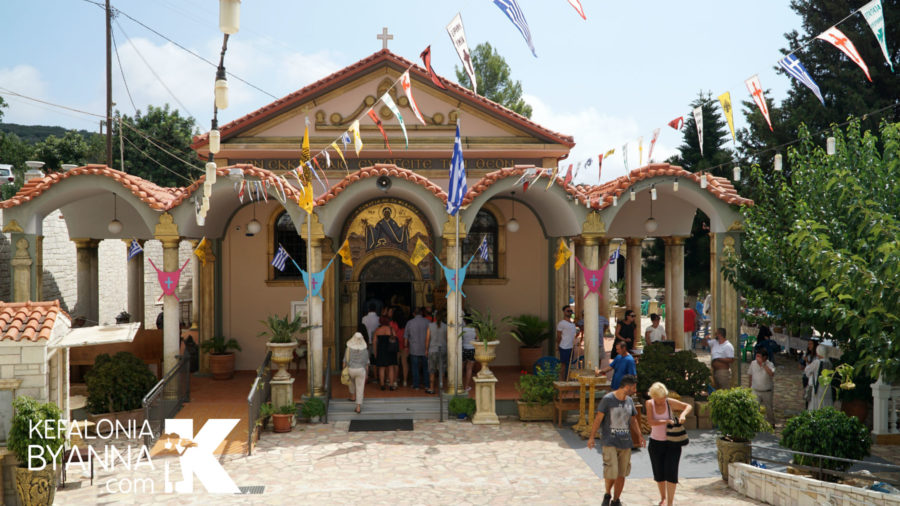
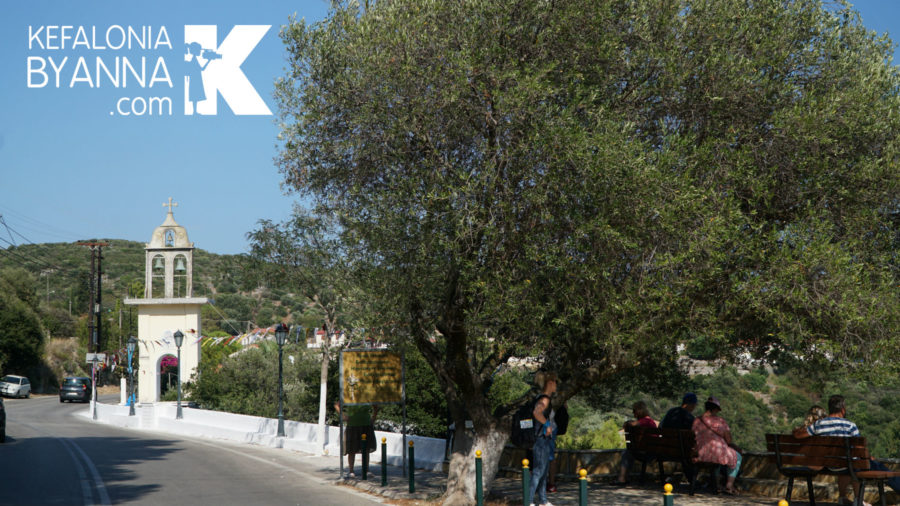
We started out mid-morning and drove from Agia Efimia through the beautiful valleys, villages and mountainsides towards the village of Pastra, located in the south of the island, close to Katelios. On the way there we passed through several villages packed with smartly dressed families attending church and preparing to spend the day off together. As we reached Pastra the roads became busier and busier with foreign and domestic coaches, who were spilling out religious pilgrims and tourists alike, for Pastra is famous for it’s miraculously resurrected lilies at the church of the Virgin Mary Gravaliotissa.
The church steps were thronged with ladies in brightly coloured headscarves and dresses, men and children in their Sunday best, and priests all chatting excitedly. As well as Greeks there were many foreign pilgrims, we think Ukrainian, many of them were wearing traditional clothing. Inside the church it was very busy with people queuing to kiss the icon of the Virgin Mary and to receive a dried lily.
Five months previous to this celebration parishioners from the local village take fresh lilies to the church on the day of the Annunciation where the flowers are left without water and gradually dry completely. The flowers are left this way until August 15th and when they are given water fresh buds appear and the lilies are miraculously resurrected. The priest performs a liturgy on the feast of the Assumption and the flowers are distributed amongst the parishioners. There was a sense of joy and happiness in the church, with the pilgrims obviously enjoying their experience.
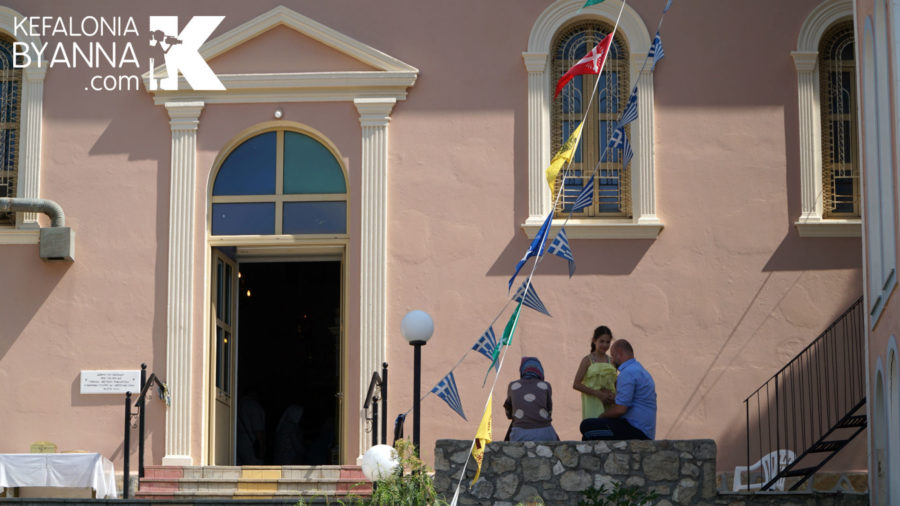
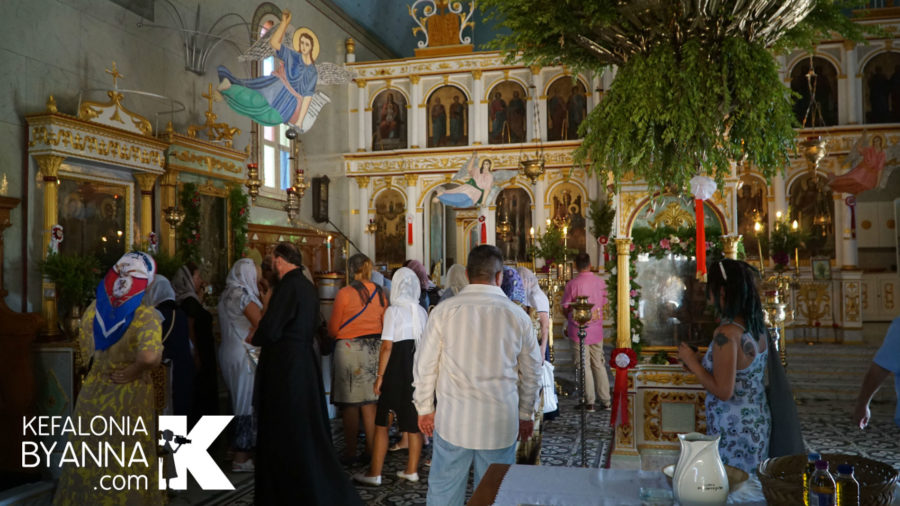
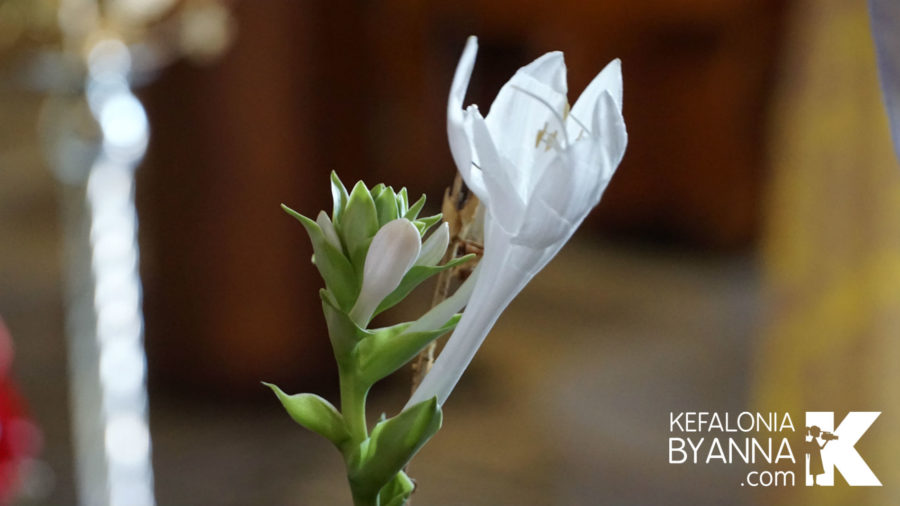
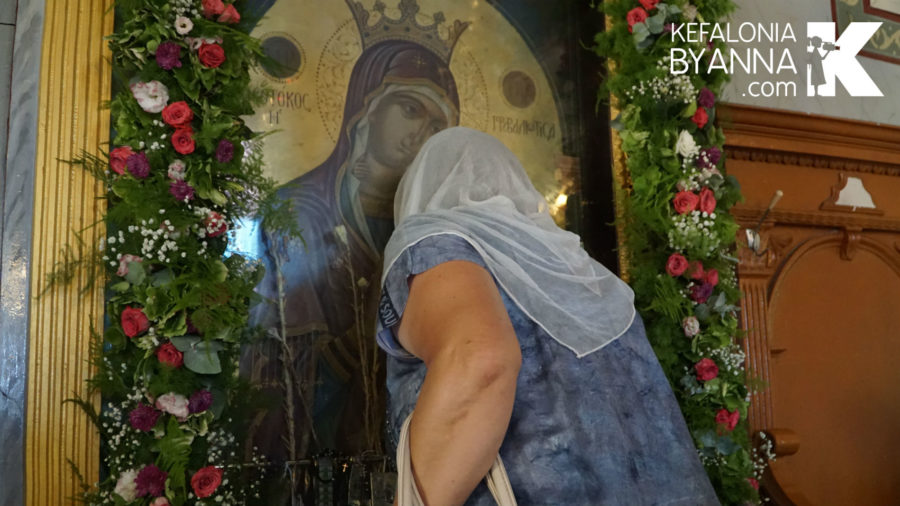
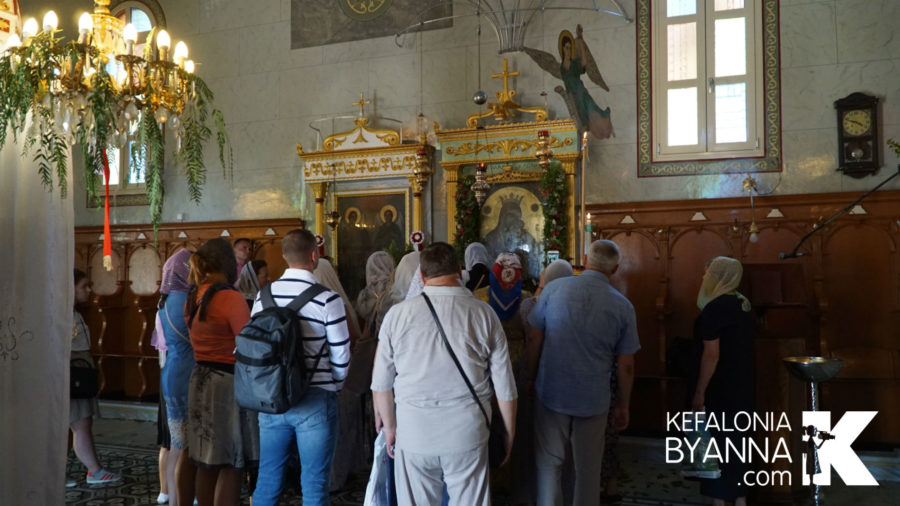
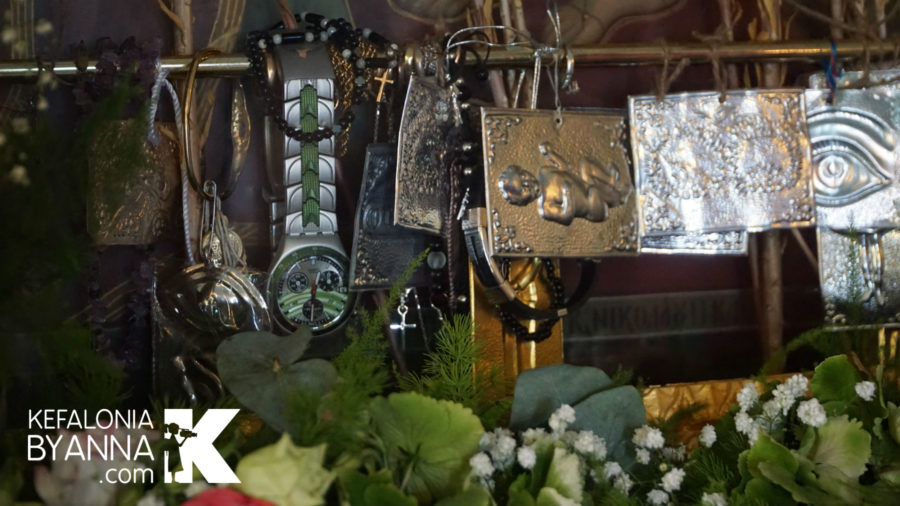
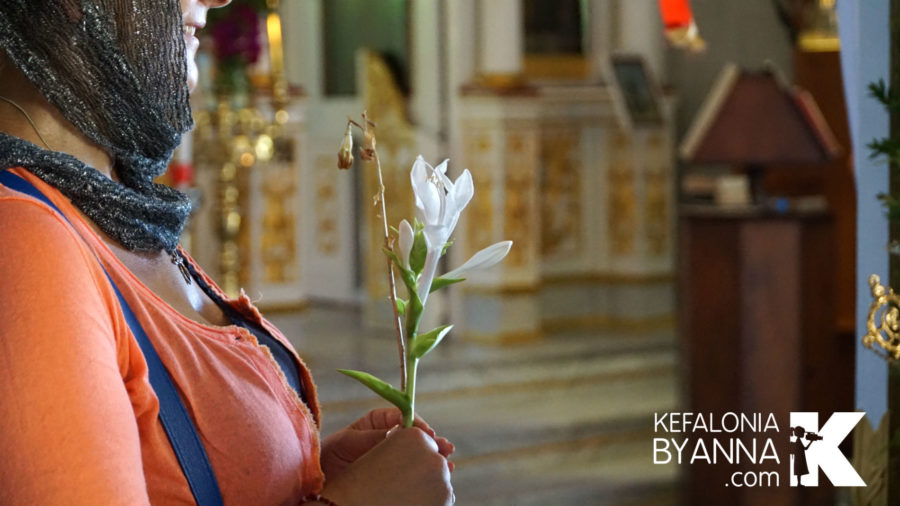
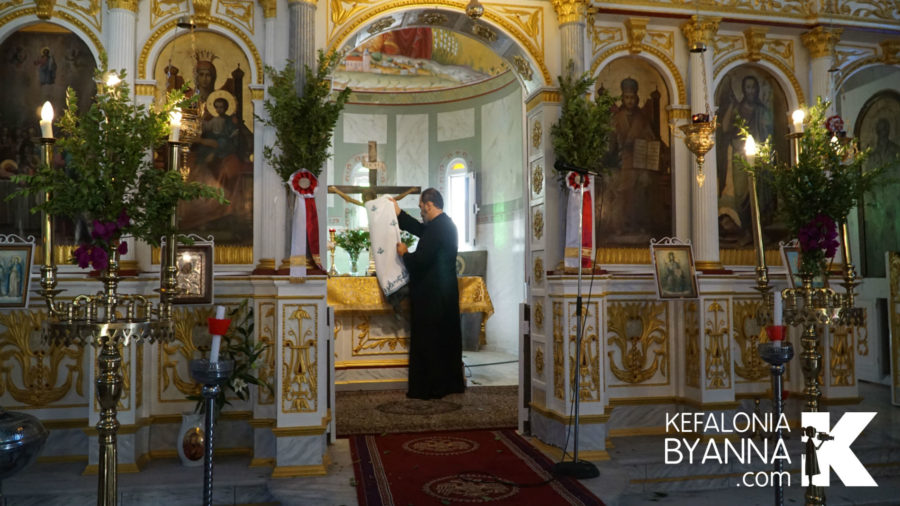
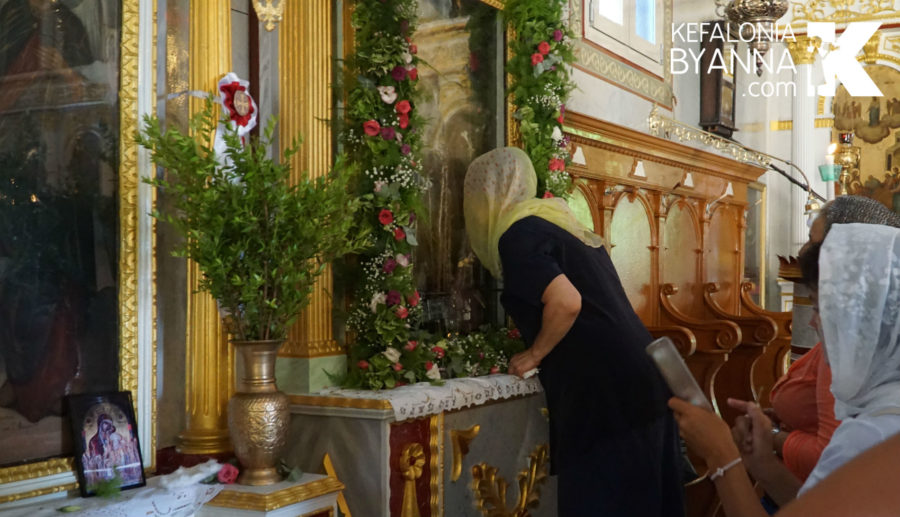
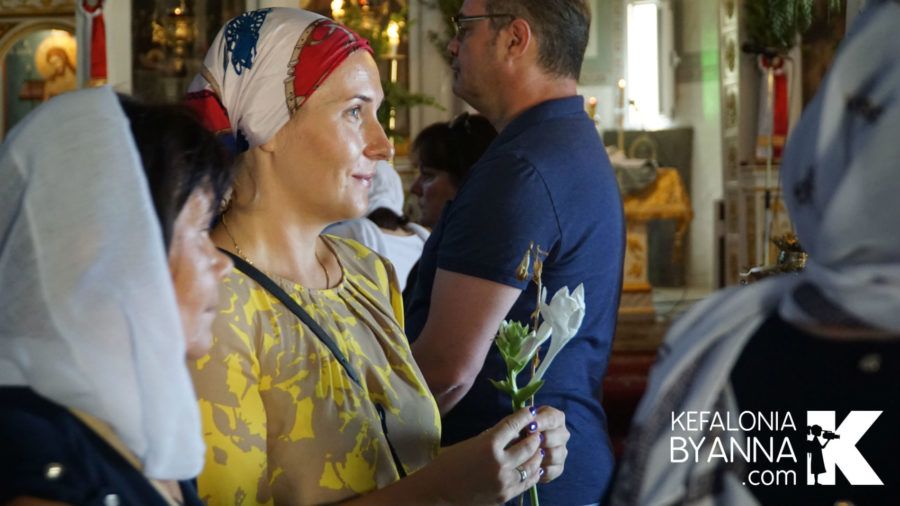
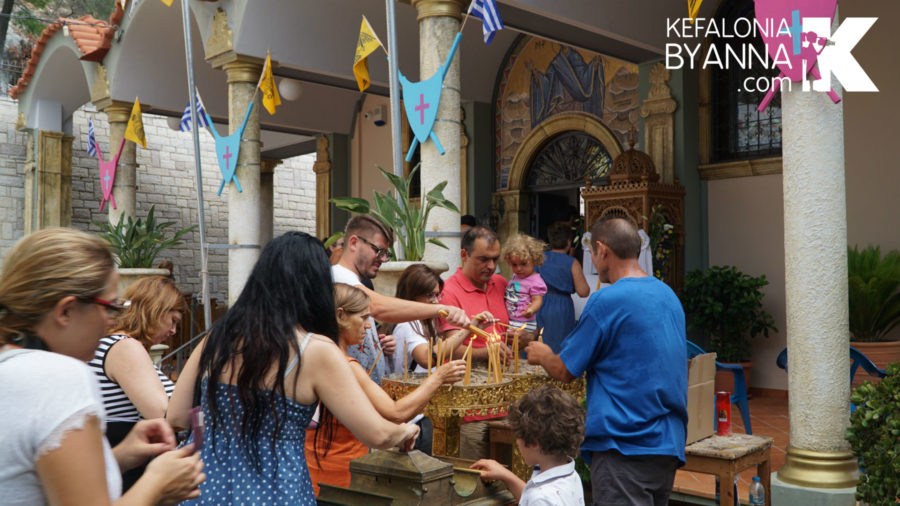
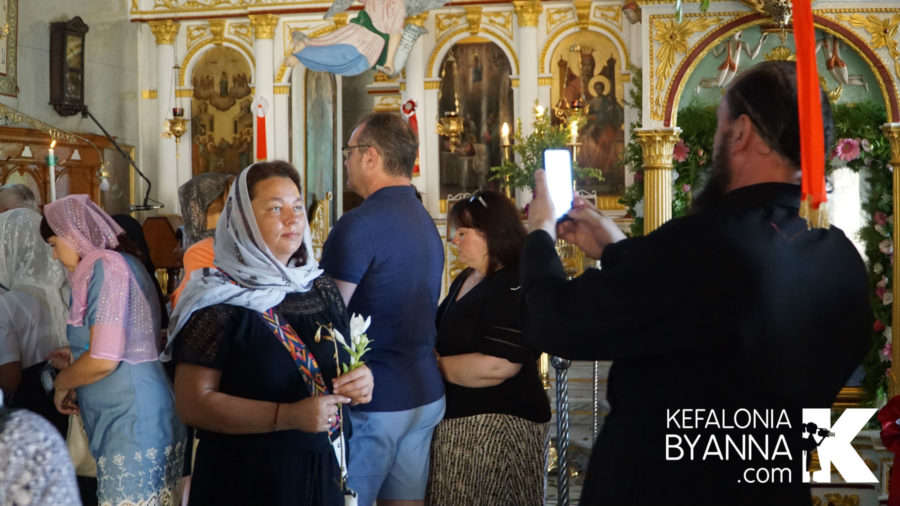
Next we drove a few kilometres to Panagia Lagouvarda at Markopoulo to witness part of the snake festival. The bell tower at the side of the road stands on the original site but the temple is now located at the foot of a steep, paved walk way. The sun was very hot and there were many people walking the path back and forth. Fortunately there is a spring half way down where we could refresh ourselves.
This celebration seemed busier than that of the one at Pastra, and continuing towards the church we passed through several stalls with monks selling religious artefacts, books and jewellery. There were also a few beggars and people selling candles. You could hear the chatter of people a few metres away from the church entrance, and the queue to visit the icon here was spilling out of the doorway. The church is renowned throughout the Orthodox world for the icon which depicts the Virgin Mary with small snakes.
“Panagia Lagouvarda” is the name given to the image – Virgin of the Snakes – as these small snakes visit annually between 6th and 15th of August, and are collected up for the parishioners to touch, lay on their head and chests. The snakes here are kept in glass boxes inside the church. The appearance of the snakes has occurred every year apart from three – the year of the German occupation (1940), the year of the devastating earthquake (1953) and that of the last big earthquake (2014) – and so have become synonymous with good luck. Some say they appear at the temple as it is on their migratory route whilst others believe that the snakes are a miraculous phenomenon and the submission of the snakes to the grace of the Virgin Mary is a miracle.
Legend decrees that hundreds of years ago the nuns who lived on the site were terrorised by marauding pirates and they asked the Virgin Mary for protection, she responded and when the pirates reached the temple they were met by hundreds of hissing snakes and they ran away! We saw many of the pilgrims that had visited Pastra earlier on their religious tour. We climbed back up onto the road and continued on our way.
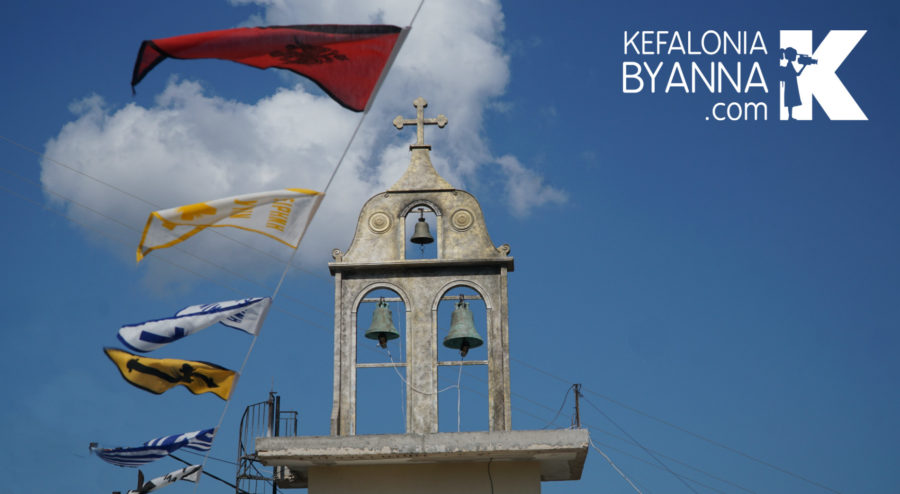
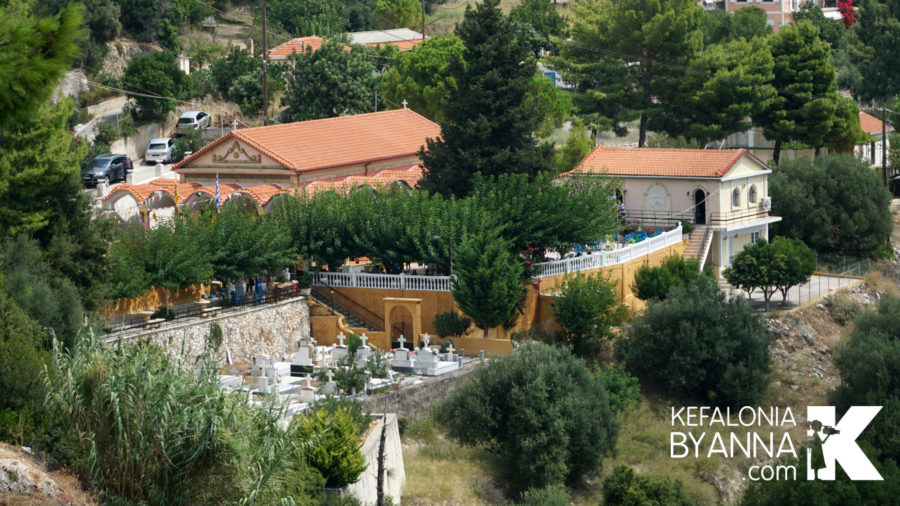
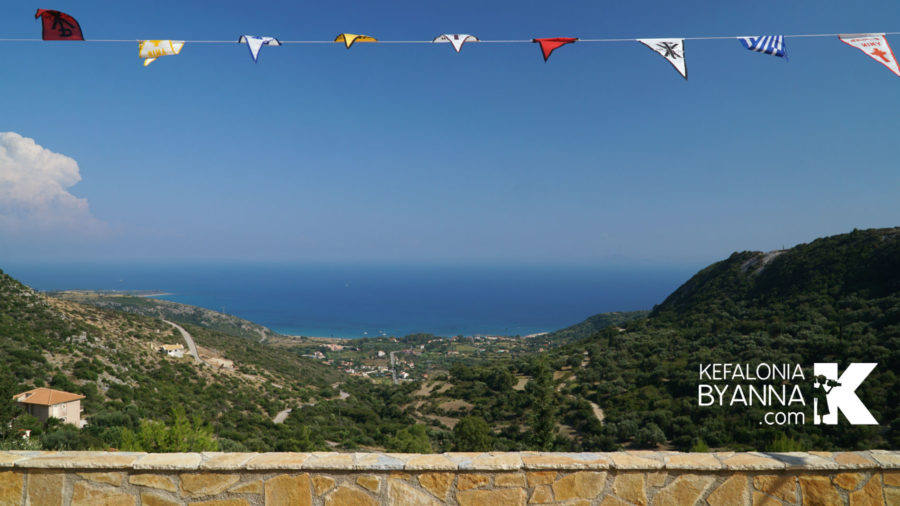
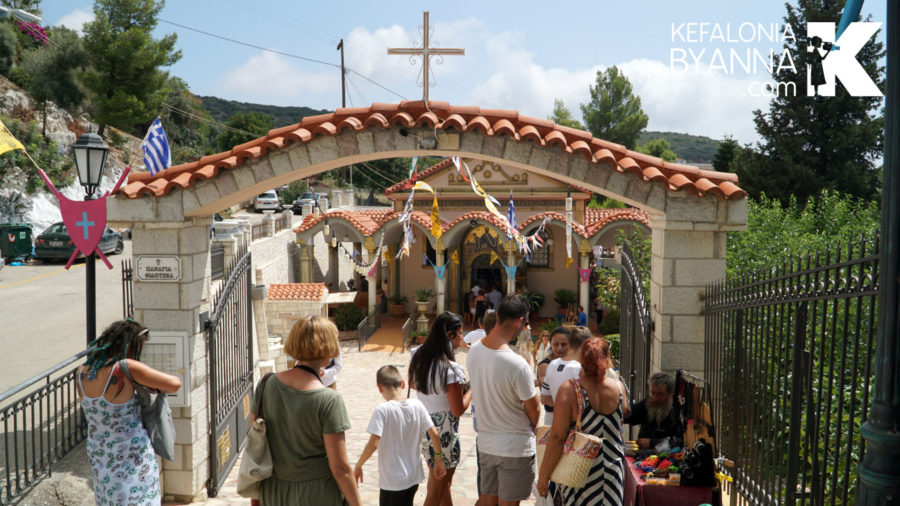

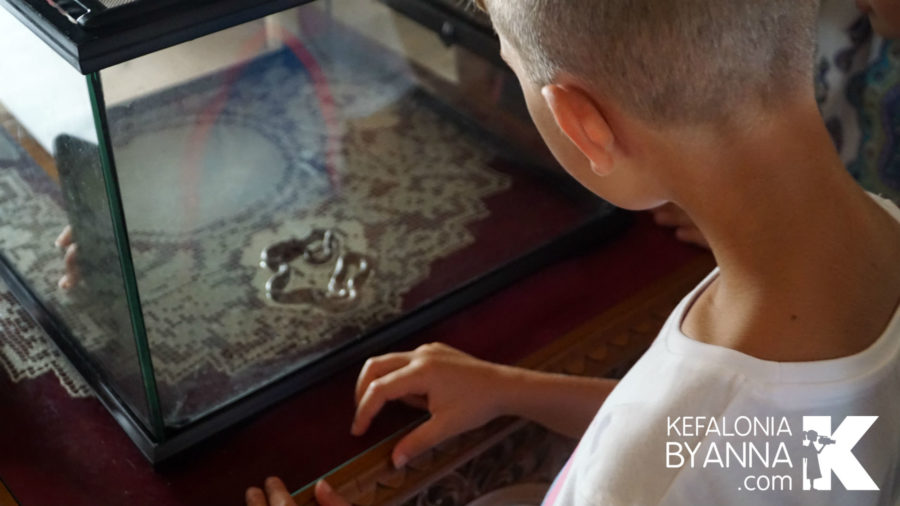
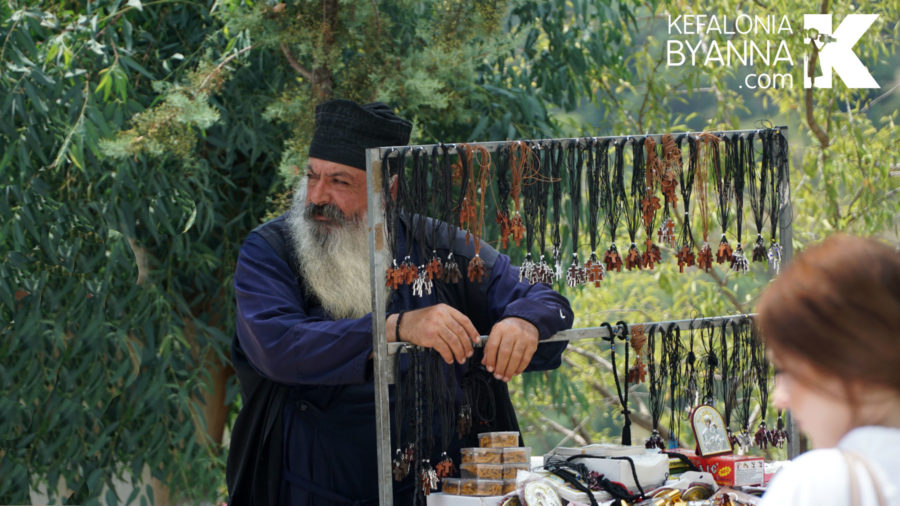
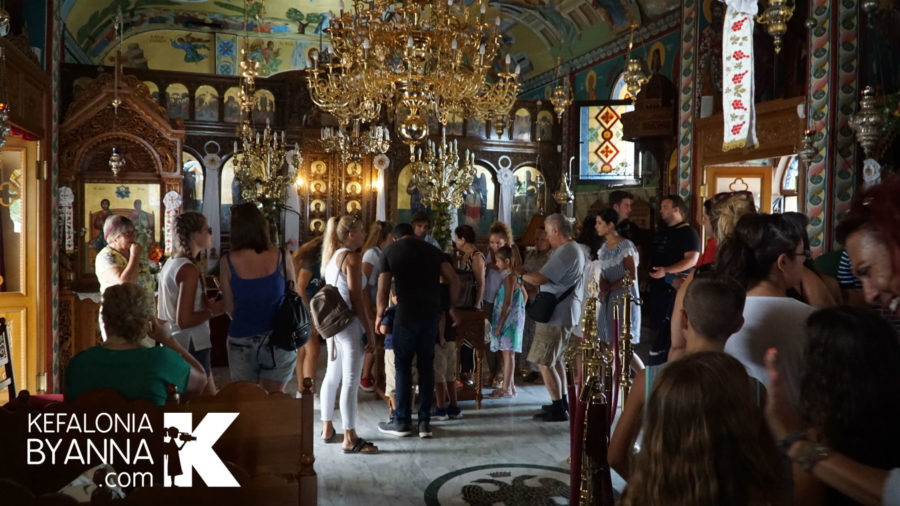
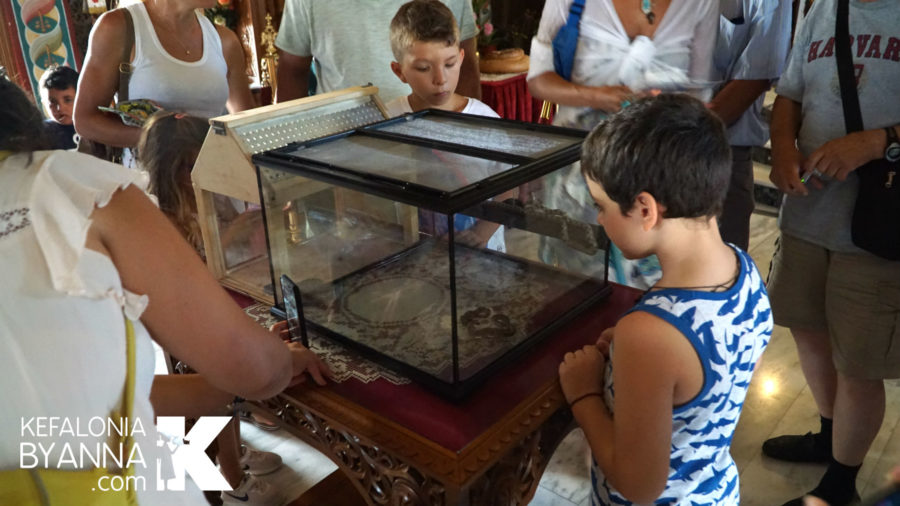
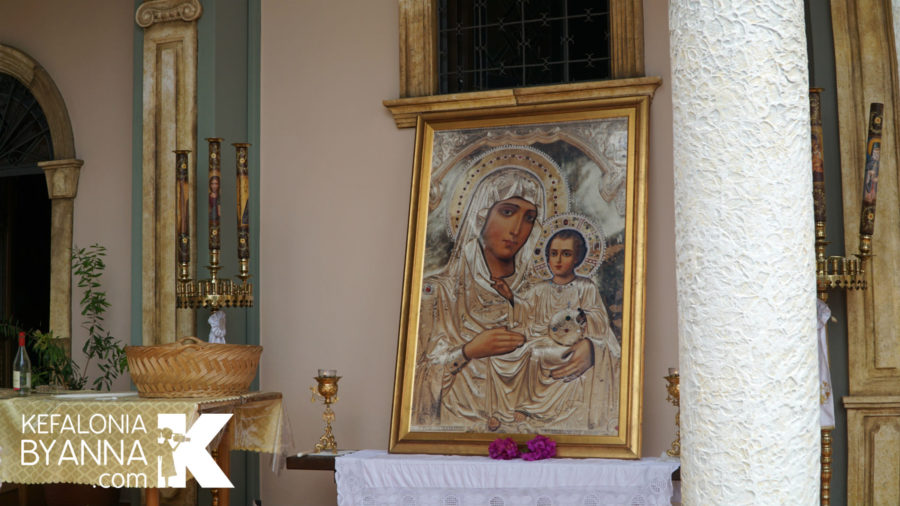
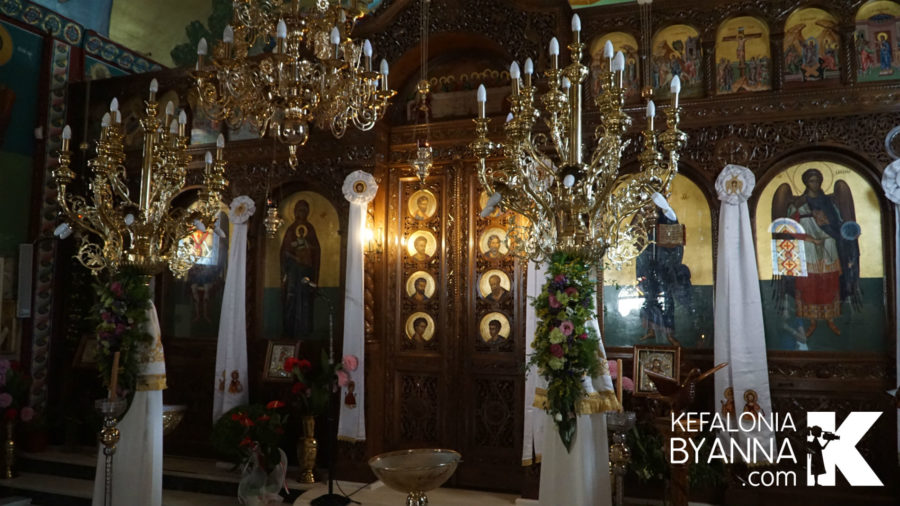
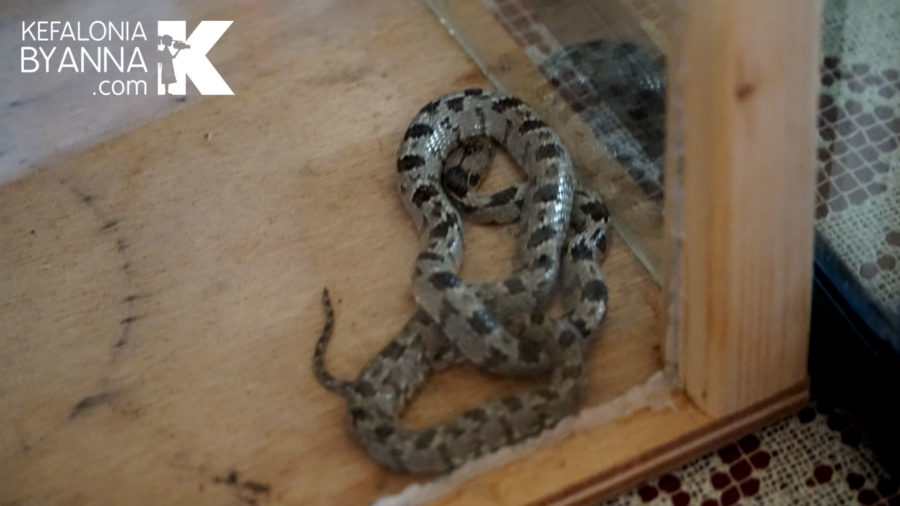
Anna had received a call telling us that a less busy place to visit and to witness the miracle of the snakes was at the church of the Assumption of Virgin Mary at Arginia. Arginia is a small, very pretty settlement located higher up in the mountains above the south coast, and as we drove up the narrow winding road the views towards Zakynthos were outstanding. The village gardens were in wonderful and colourful bloom, the air was still and hot, and the absence of bus tours gave the place a sense of peace.
The outside of the church is not terribly attractive but as we walked in our eyes were drawn to the large icon of the Virgin Mary, draped by a live, unrestricted, snake! We were invited to touch the snake and to pick it up. It was very calm and docile. The caretaker told us that the snakes appear around the village and they are collected and brought to the church. After the 15th of August they are set free back to the mountainside, to return again the next year. More visitors arrived, some were very keen to touch, kiss and talk to the snake, whilst others remained wary of it. Out of the three places we visited this was undoubtedly the least busy, and because of its location and peacefulness was my favourite.
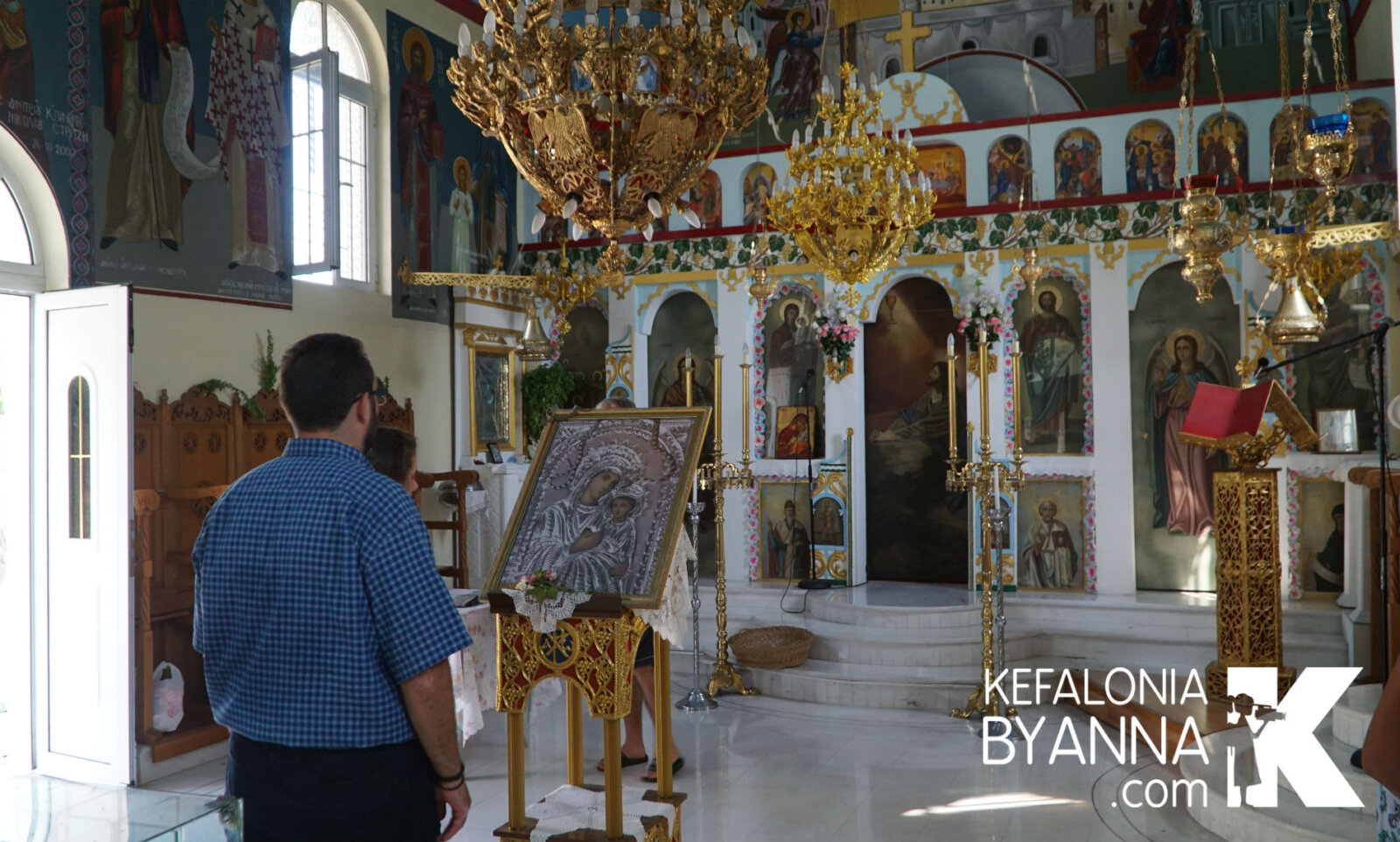
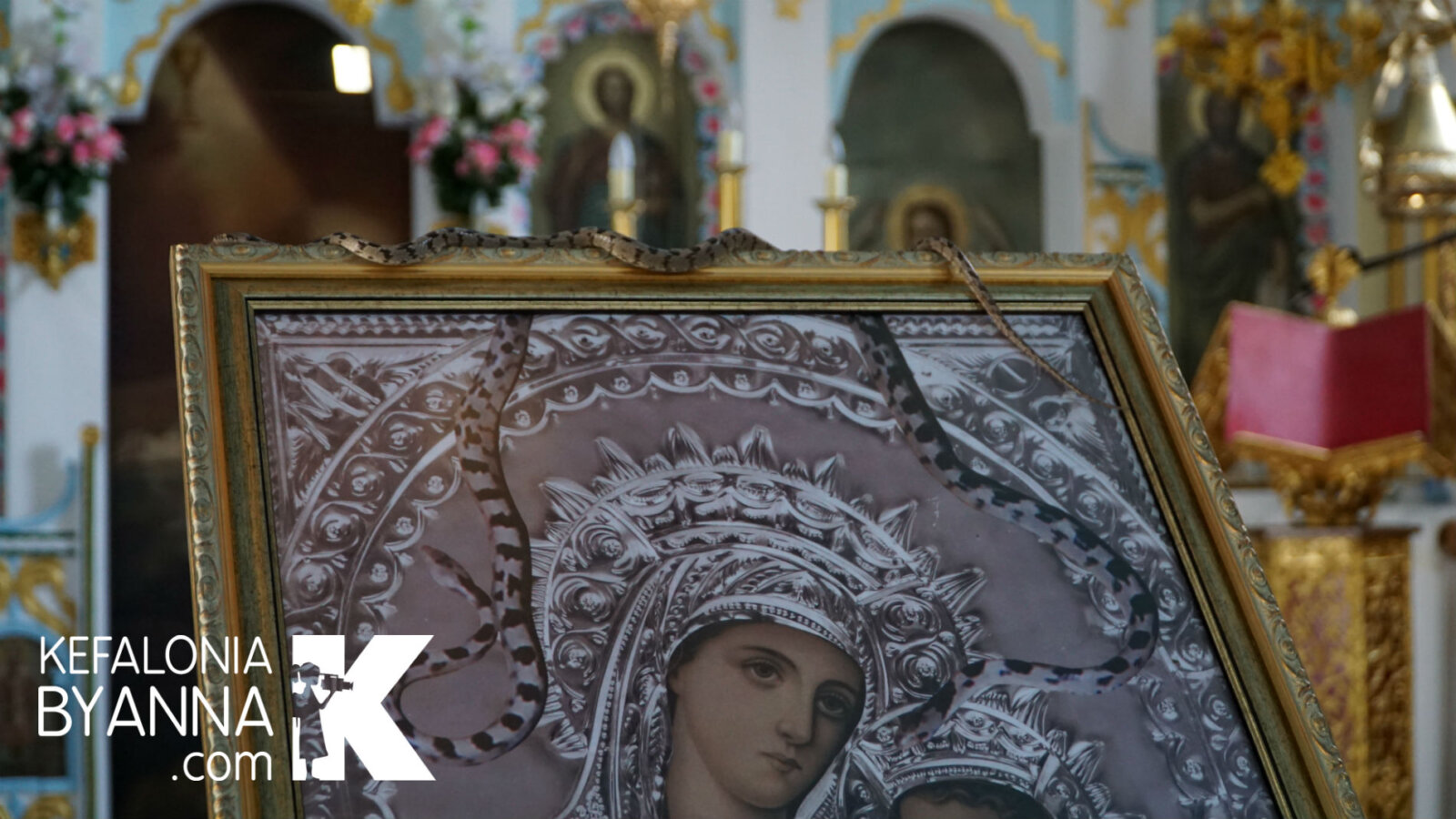
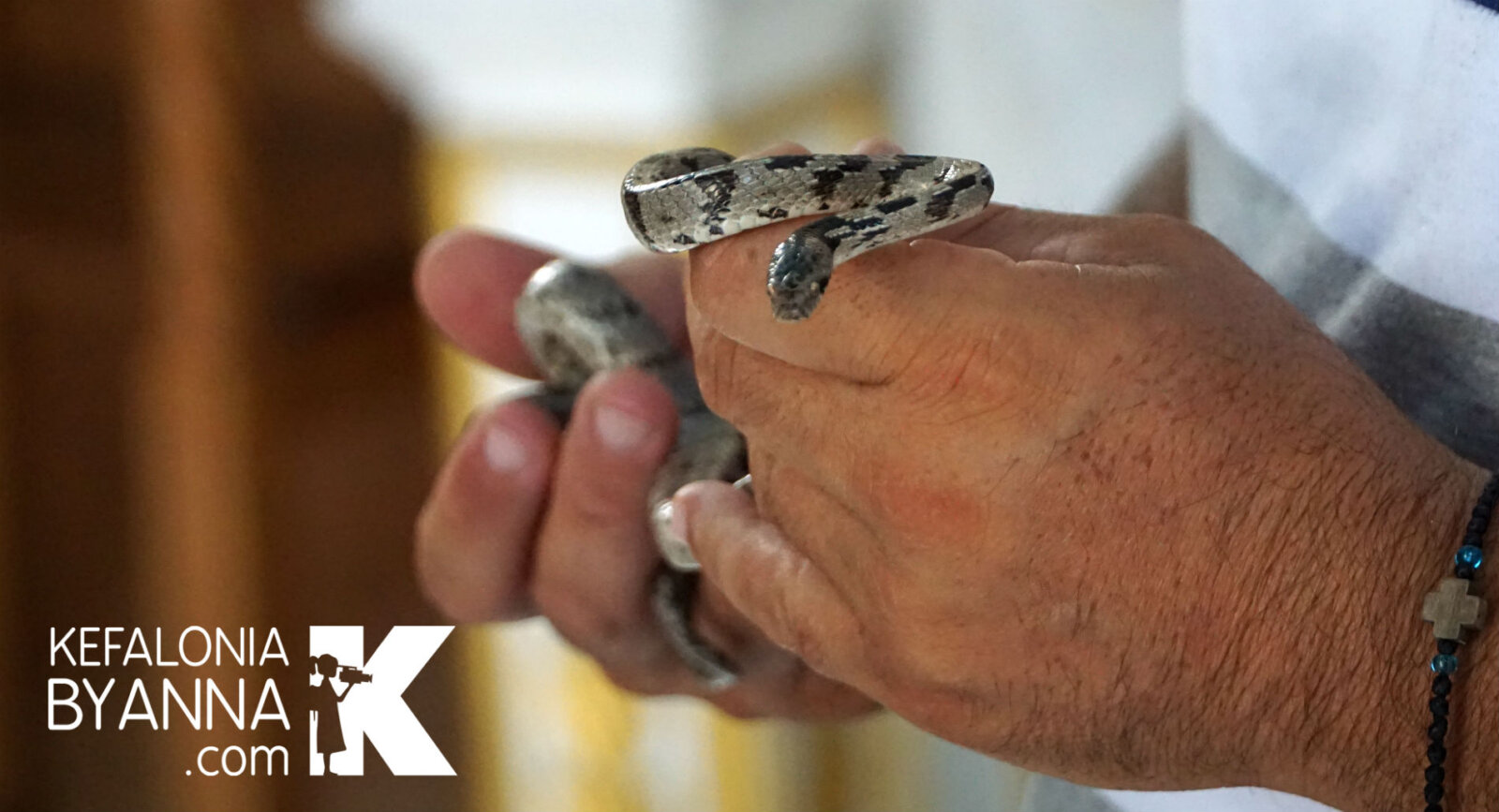
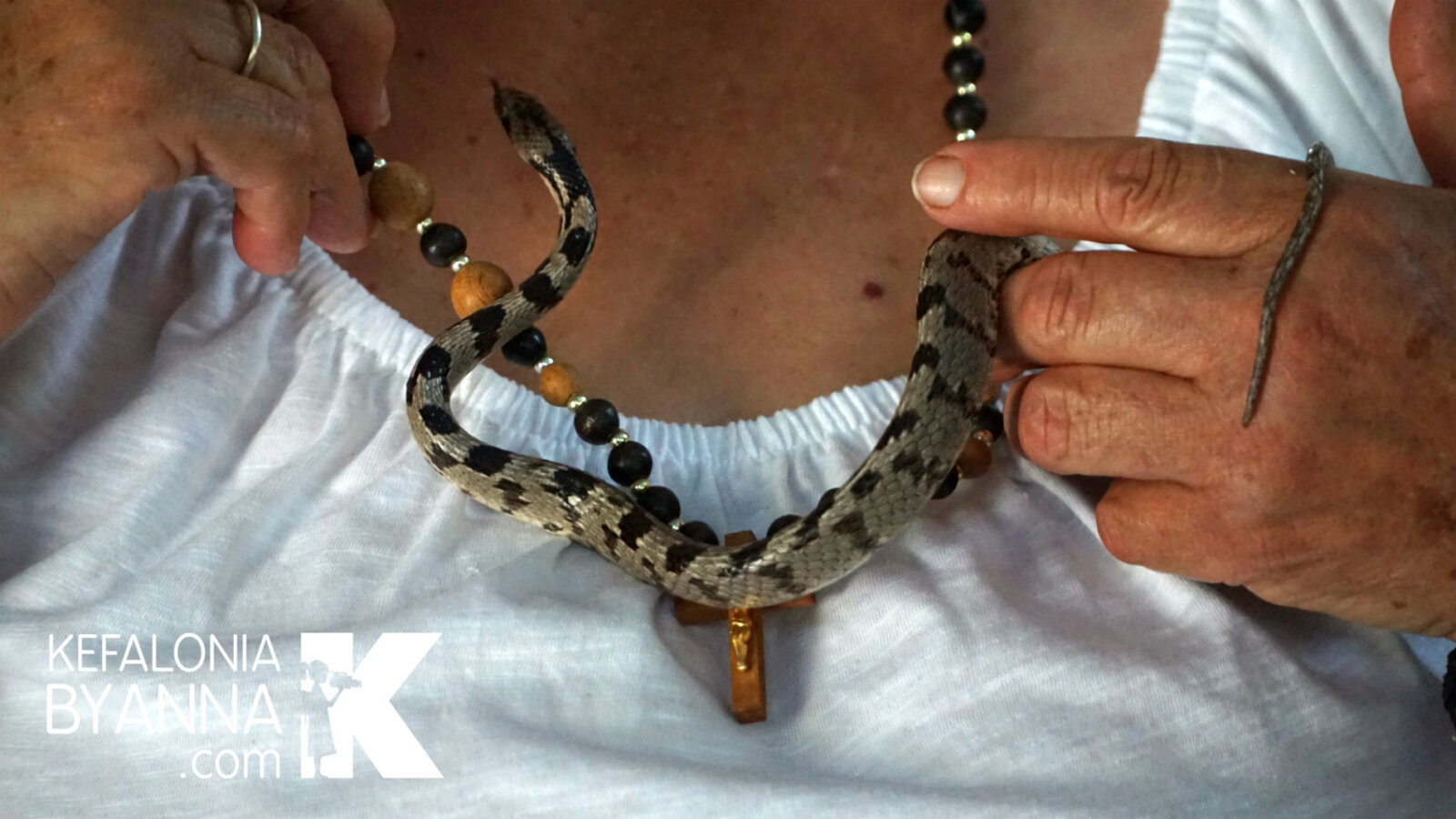
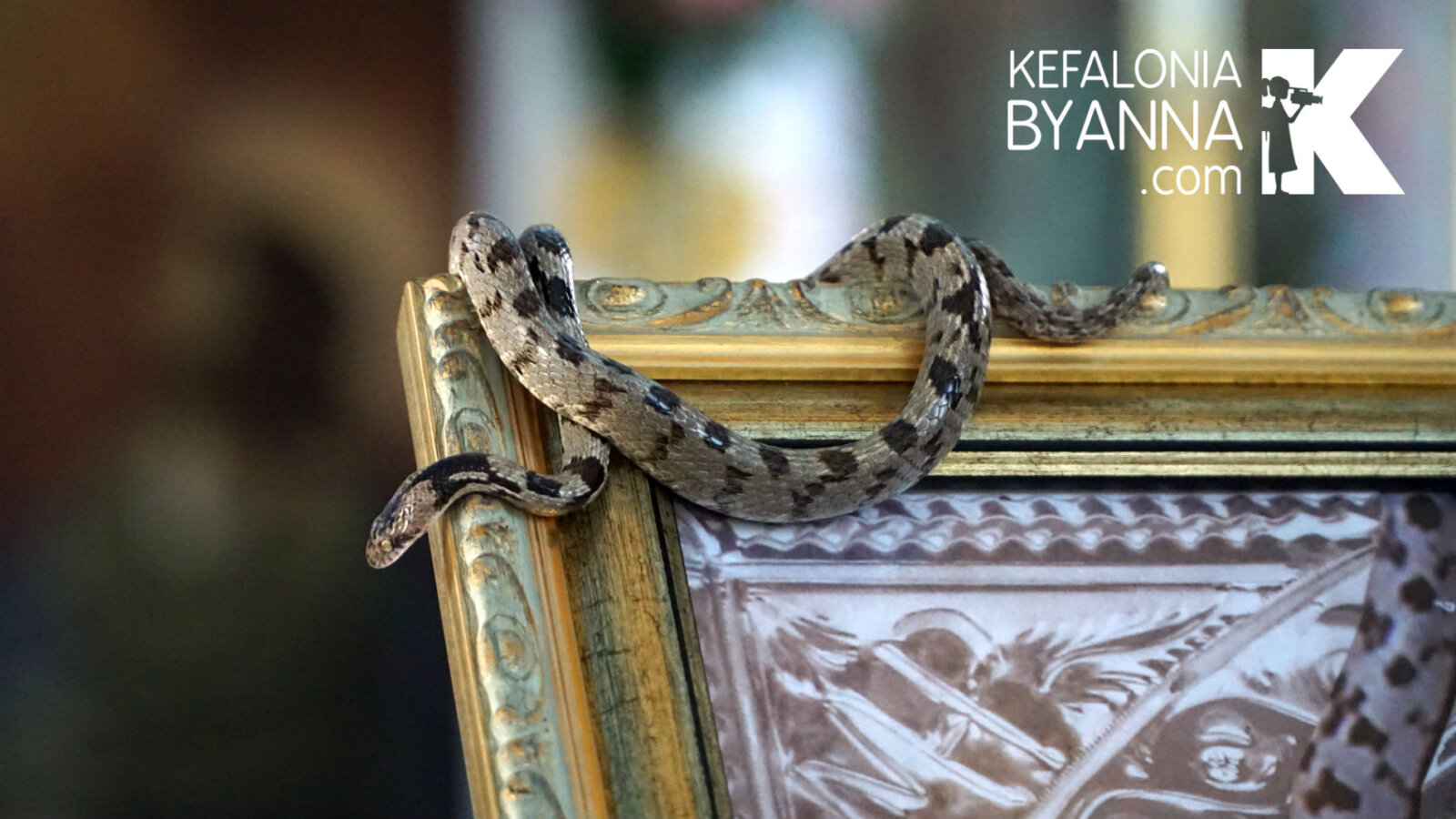
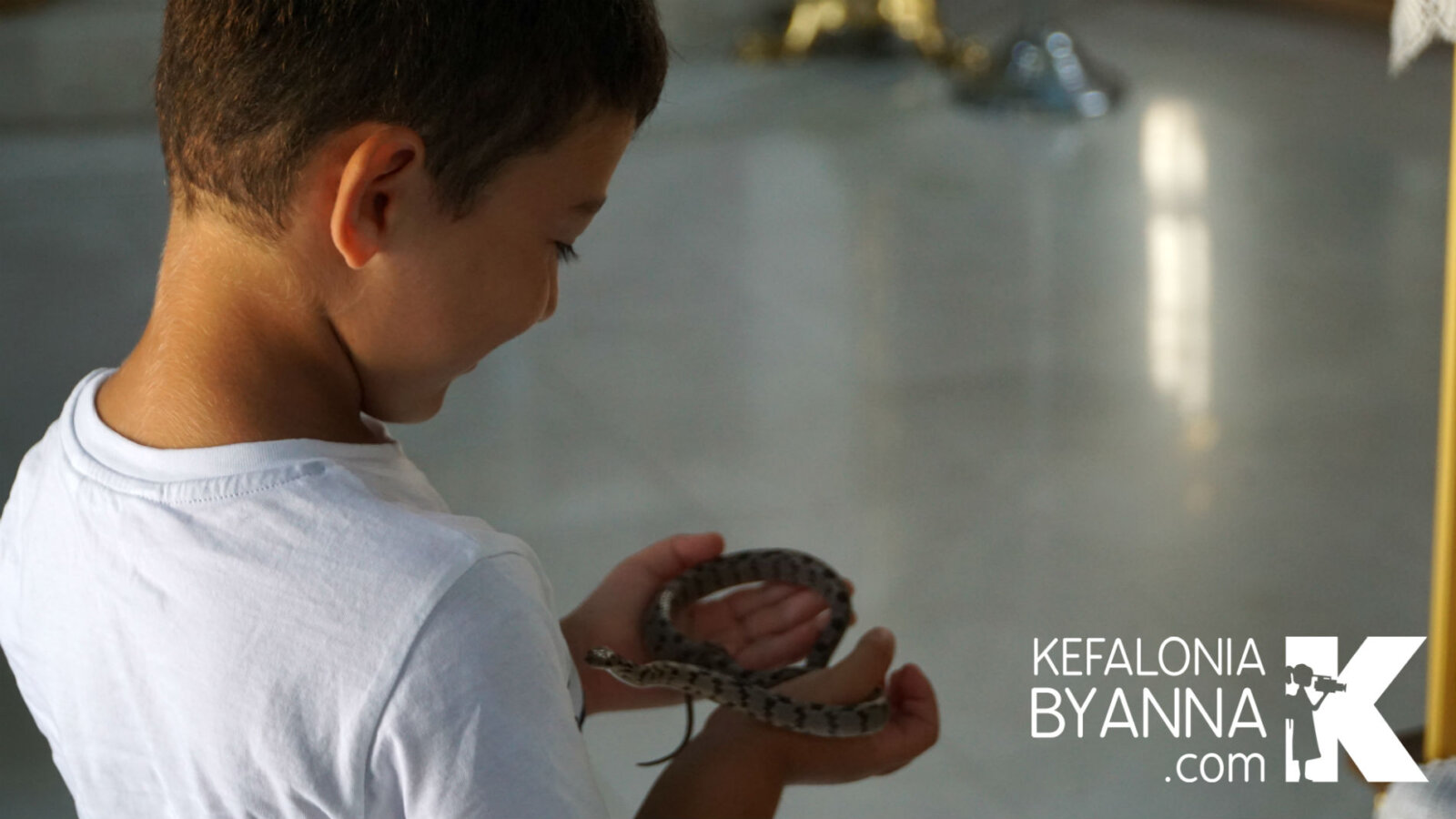
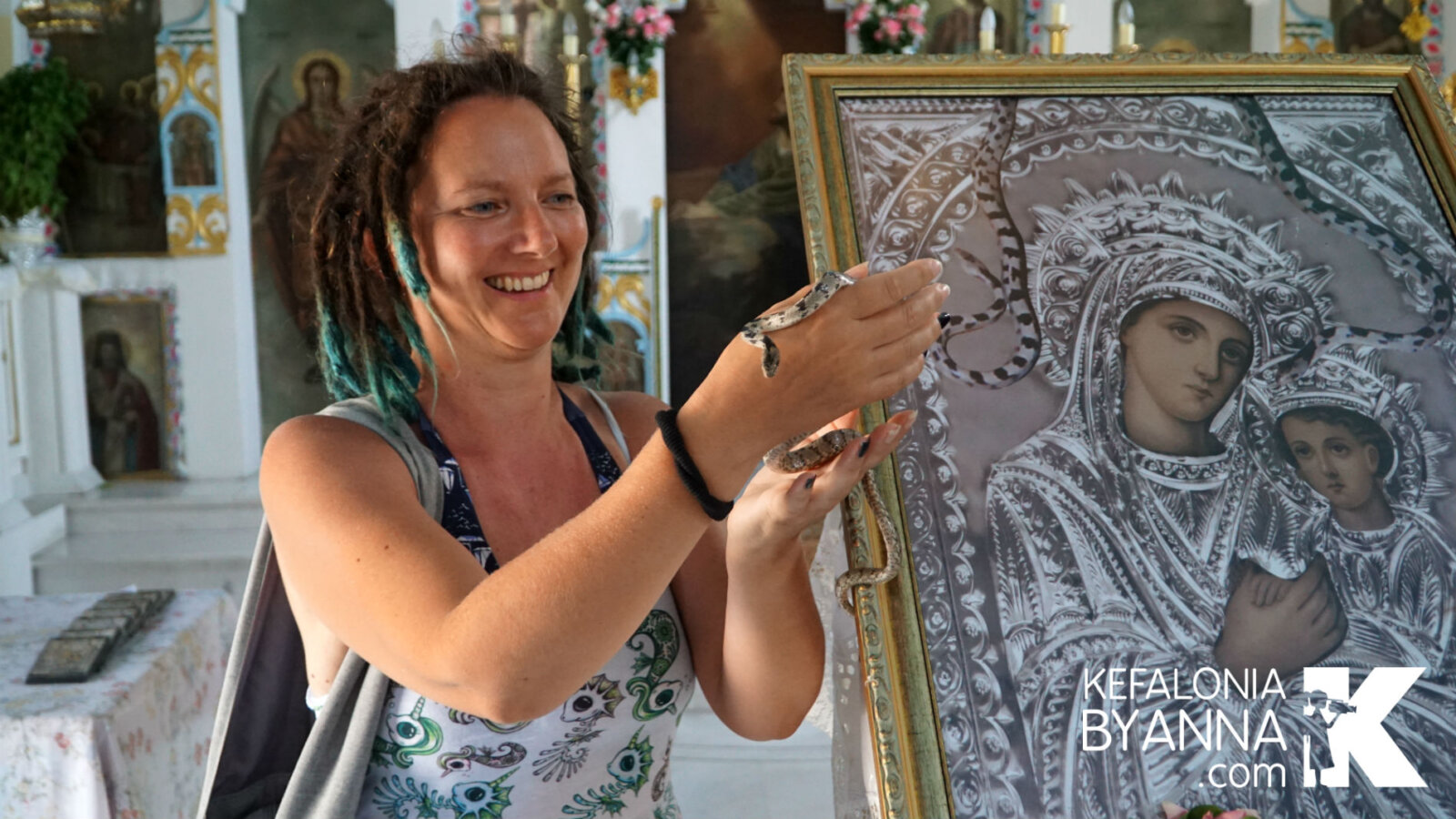
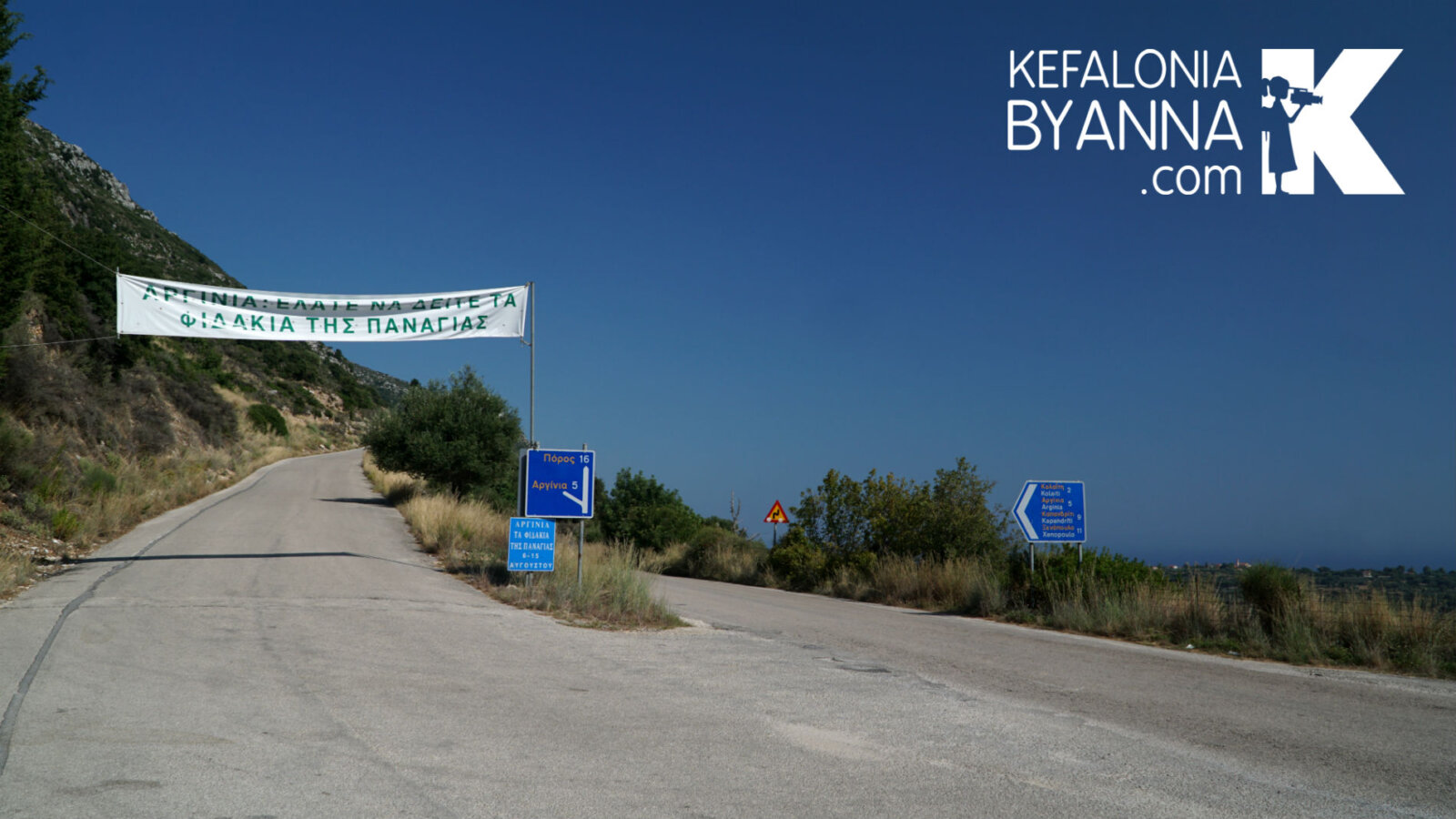
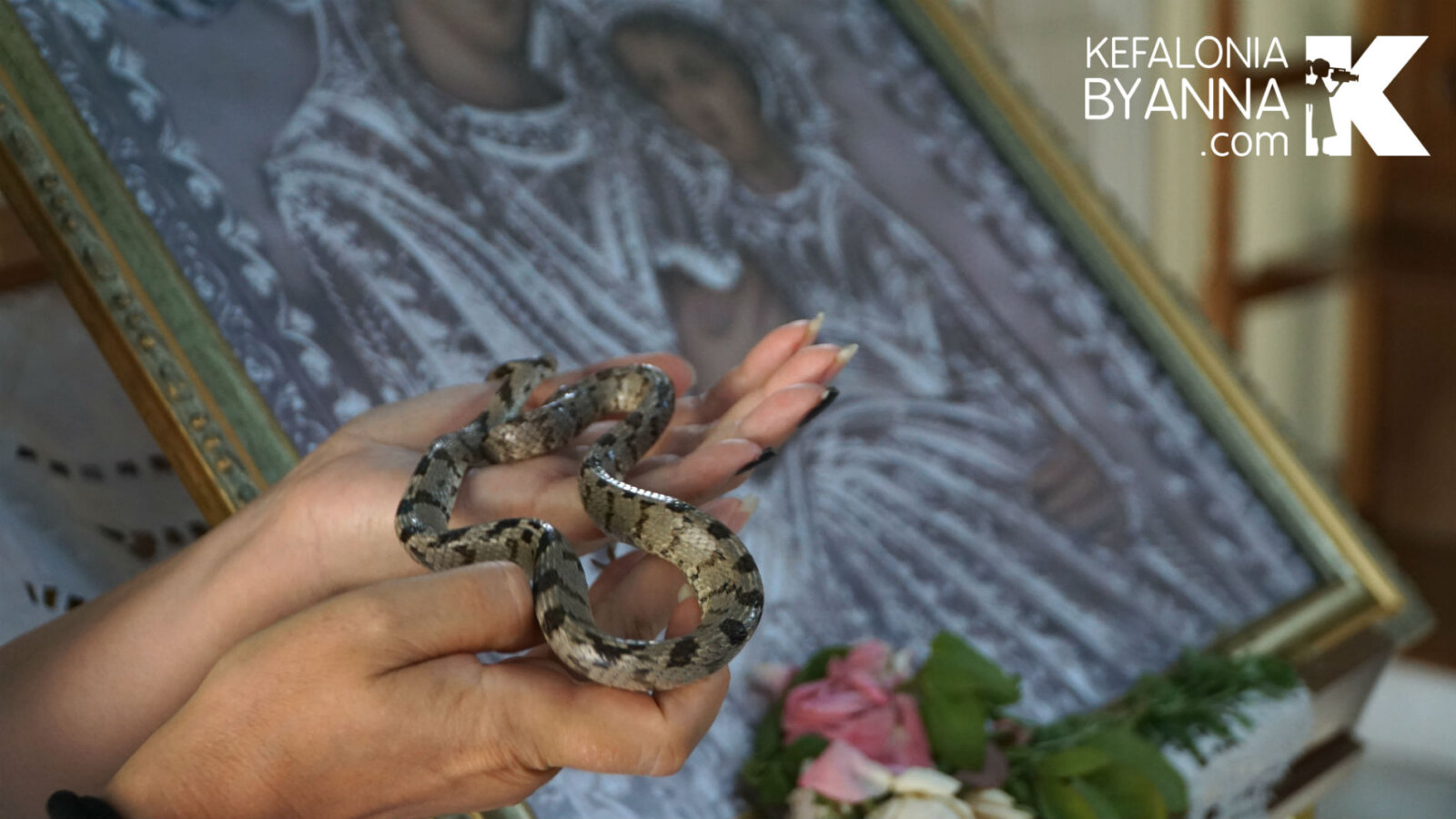
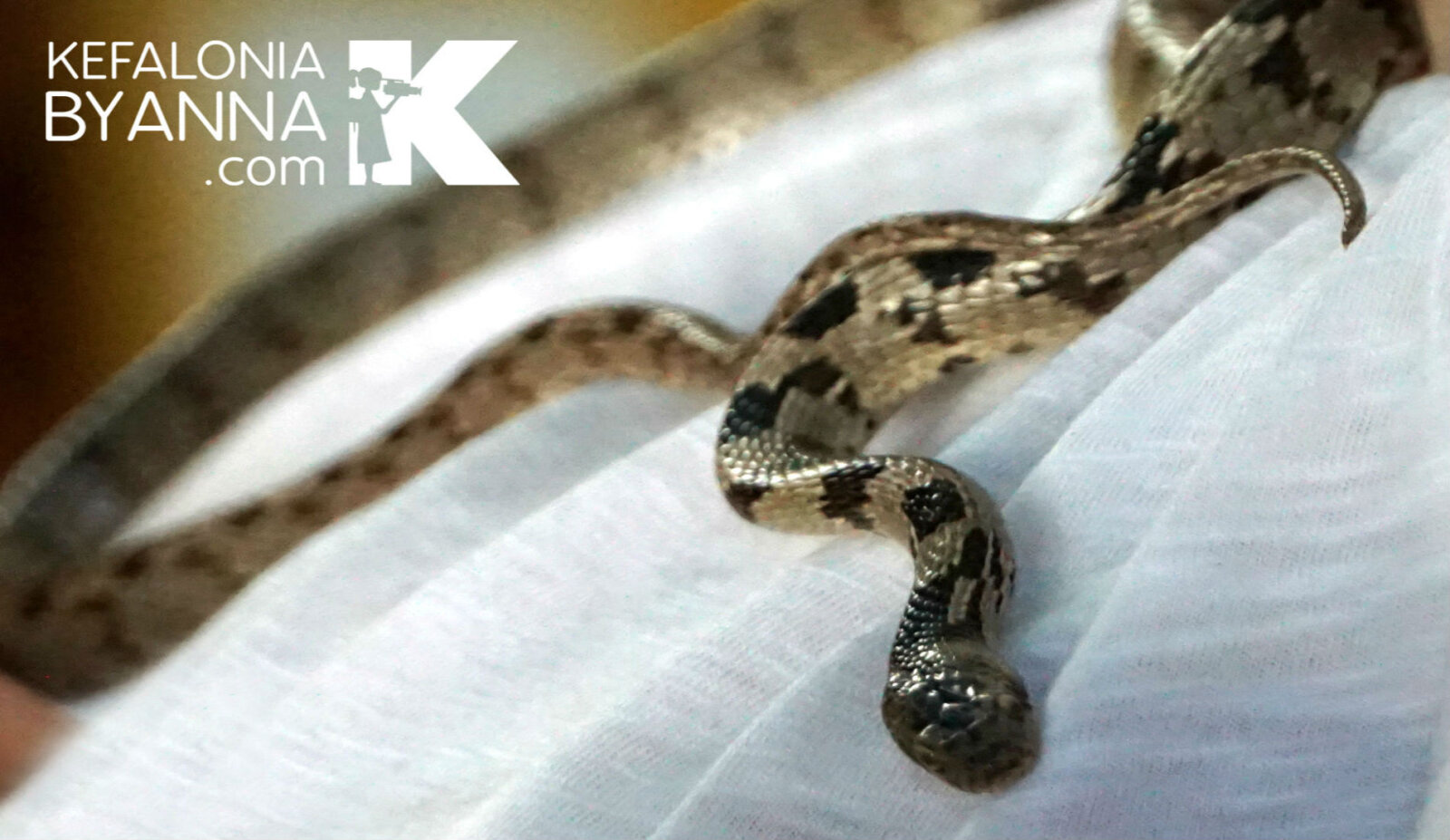
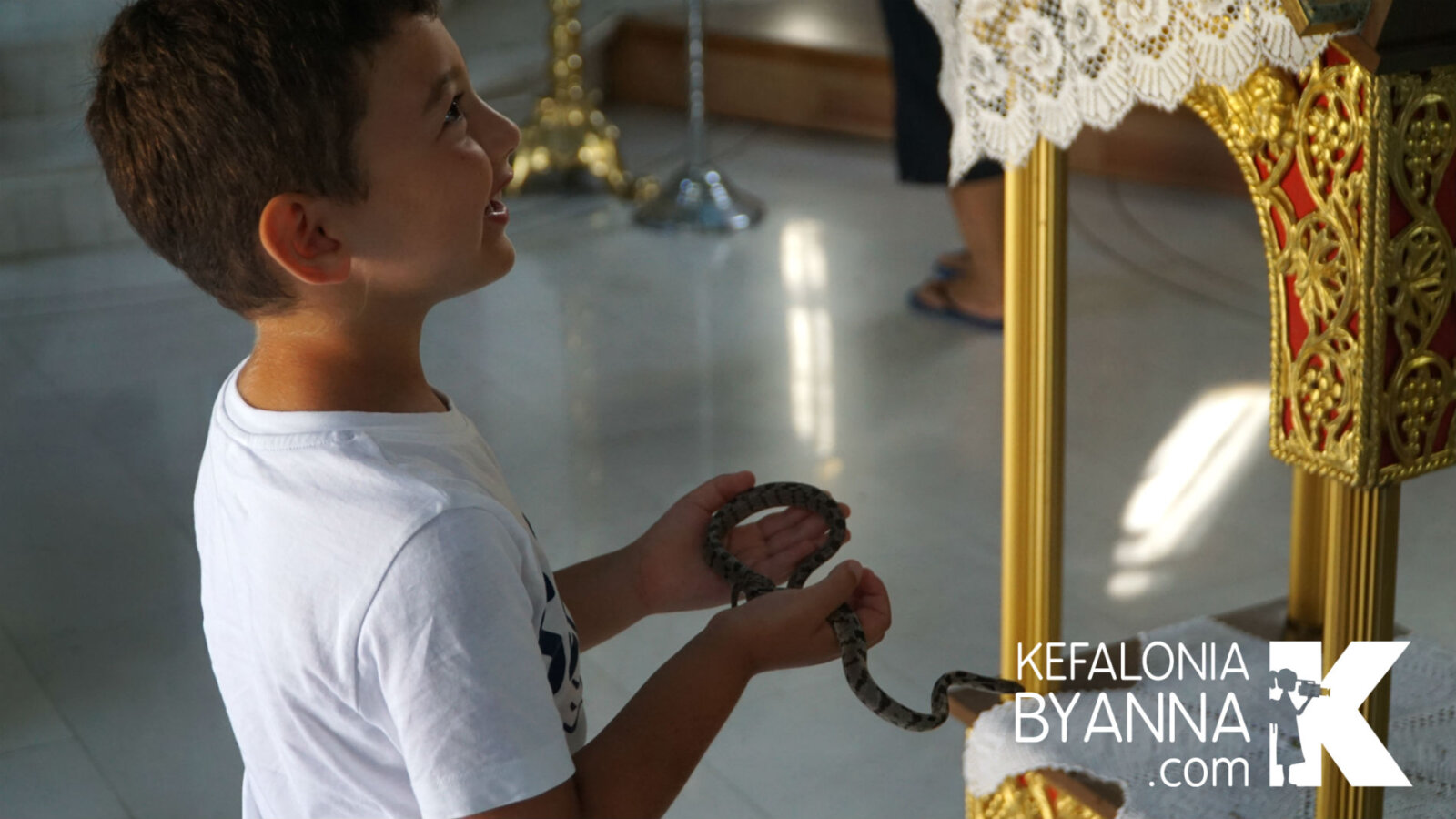
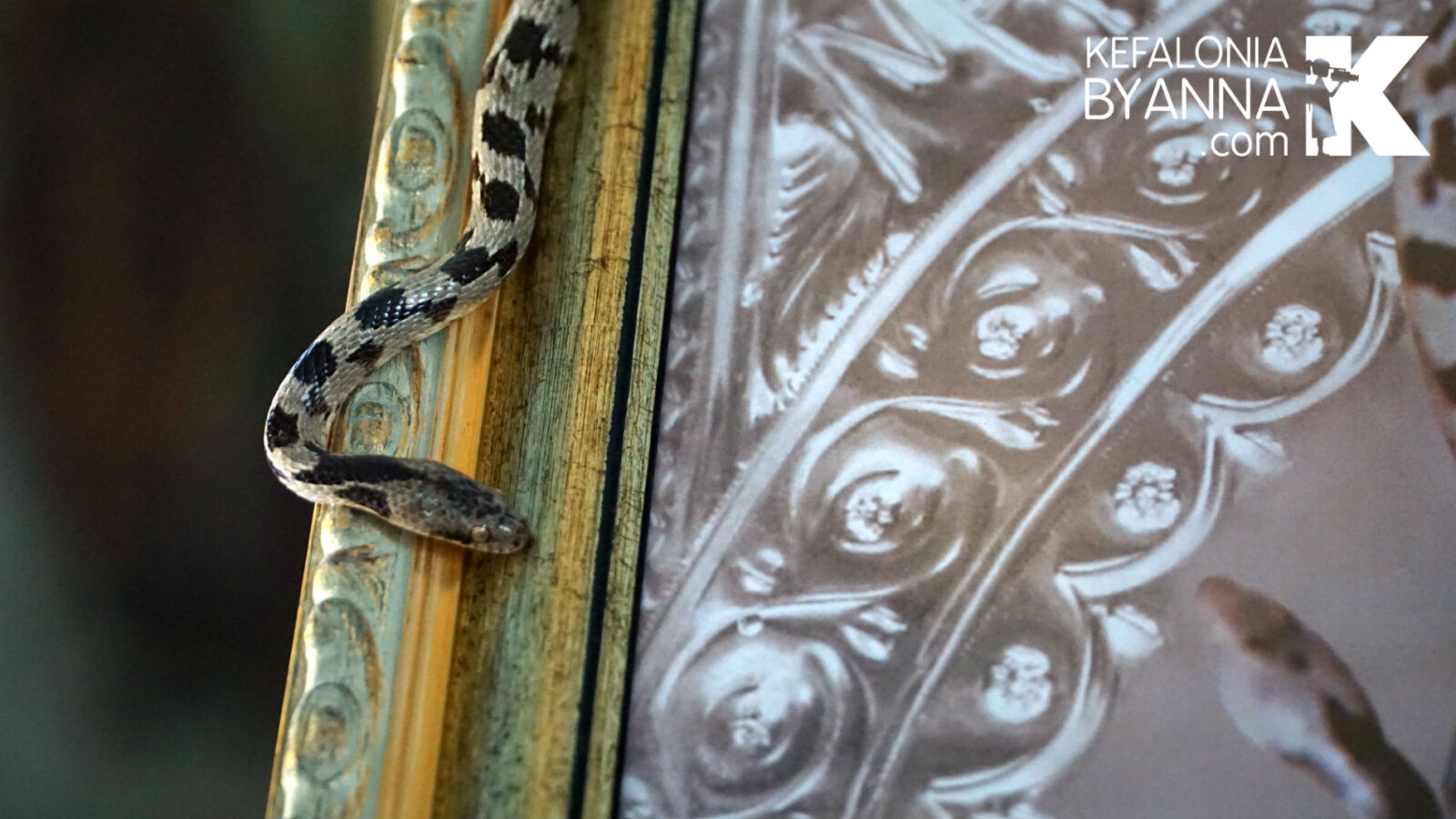
We spent a very interesting and pleasant day investigating the churches and their stories of miracles. If you get the opportunity to be on the island on the 15th of August be sure to visit one or all of them, whether or not religious, it is a very traditional and joyful day!
By Sarah O.
